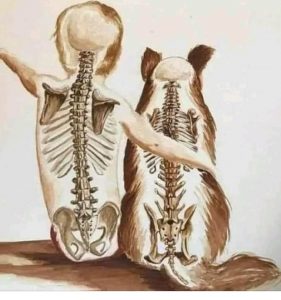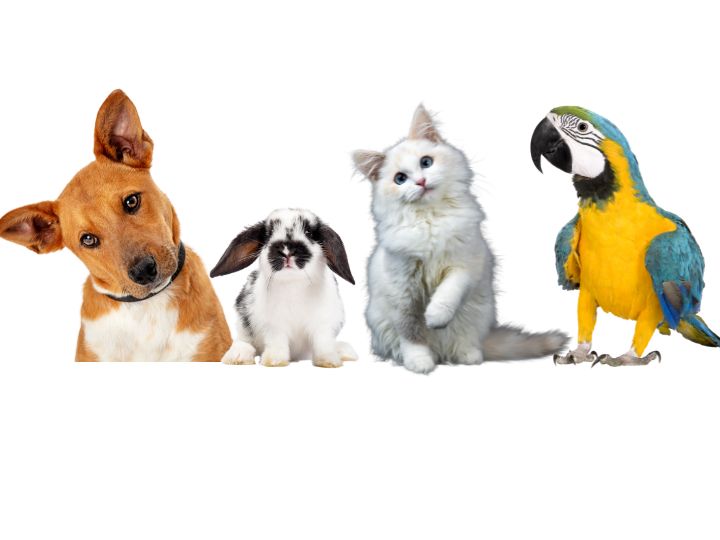Animals are just like humans, both physiologically and emotionally. And just like special people in your life, you most likely want to take great care of your pets as well. Energy therapies can be a powerful tool to heal your pets, and they can benefit greatly from The Emotion Code as well as The Body Code.
Just like people, animals can have Trapped Emotions and energetic imbalances that affect their health and happiness. These issues can trigger unusual behaviours due to the emotional or physical discomfort they are feeling.
Energetic problems in pets often come from past traumatic experiences that leave residual energies in their bodies. The goal of practising energy work on pets is to balance the energy levels in their bodies, returning them to their optimum state, so that they can heal themselves. Many of these energy healing techniques that benefit humans can also be used on pets.
Animals are very sensitive to vibration from energies like emotions, as you may have already noticed if you have a cat or a dog at home. Some animals are more sensitive than others, in fact, some are extremely sensitive. Next time you notice your lovely pet behaving weird, this article may help you to understand why.
As energy healing practitioners we have seen amazing results by practising energy work on animals and often notice almost immediate changes in behaviour and attitude after a session. All our therapeutic techniques work perfectly well in animals.

Emotional Support for Animals
Animals are affected by the same stuff we humans are: Trapped emotions and Heart-Wall that are addressed with Emotion Code, and other energetic imbalances that can be addressed with Body Code.
How do we treat animals?
Emotion Code and Body Code work equally in humans and animals. Both surrogate and proxy methods to muscle test work so no touching is necessary.
We can work on animals 6 feet away using a surrogate and release the emotions or imbalances on the surrogate or directly on the animal. And if the animal is remote, proxy method can be used to muscle test (using a third party or the practitioner), exactly as it is done with humans. Distance is not an issue.
Language doesn’t matter, and questions can be asked aloud or silently. It’s all about intention and subconscious-to-subconscious communication.
The more domesticated the animal, the large range of emotions. They absorb emotions from owners and people around them, or from other animals. They are very sensitive to vibrational energies.
All sorts of animals can trap emotions. Pets, smarter animals like whales and dolphins, animals in zoos, farm animals, and wild animals. The range of emotions they are exposed to depends on the environment. Wild animals in their natural environment may have a more limited range of emotions.
Common Emotions Trapped by Pets
For pets, emotions like feeling unsupported, grief, depression, unworthy, worthless are common since they usually absorb those emotions from their owners.
Abandonment and loneliness are also common, especially when their owner leaves them on their own to go to work, on business trips or on holidays.
For wild, non-domestic animals, emotions like fear and panic are common. Even sadness when they have lost a close companion.
Other situations that can trigger unusual behaviours are:
Moving Houses
Fights with other Animals
Accidents
Medical Procedures
Behaviour
Bear in mind that lots of behavioural issues are training-related. Emotion Code and Body Code are not replacement for proper training. Having said that, it may be the case that trapped emotions can be impacting the learning process and that needs to be addressed to help with the training.
Another observation, Emotion Code and Body Code are complementary care and not a replacement for veterinary care.
The goal of having Emotion Code on animals is to remove trapped emotions to:
- Help enable recovery
- Help the animal to be more trainable
- Building the relationship between the owner and the animal
- Make them feel happier and relaxed
Emotional distress manifests in behavioural changes and issues, and they may eventually morph into illness and physical discomfort.
Behavioural issues could mean anything. Just by asking the subconscious mind, the practitioner may be able to identify and release any trapped emotion.
Permission
Do not work without permission, either from the owner or the animal itself. The owner or guardian of the animal will give the practitioner explicit authorization and the animal’s subconscious mind will confirm that permission. We must ask. If the answer from the animal is no, so maybe there is something else going on. The practitioner must respect that.
And by the way, in some cases is the owner who needs to address emotional distress, not the animal.
Awareness
The owner or caregiver must be aware of the energy work done. Work can substantially affect their behaviour over the time the animal is processing the emotions, during and after the treatment.
Begin your Optimal Health Journey


